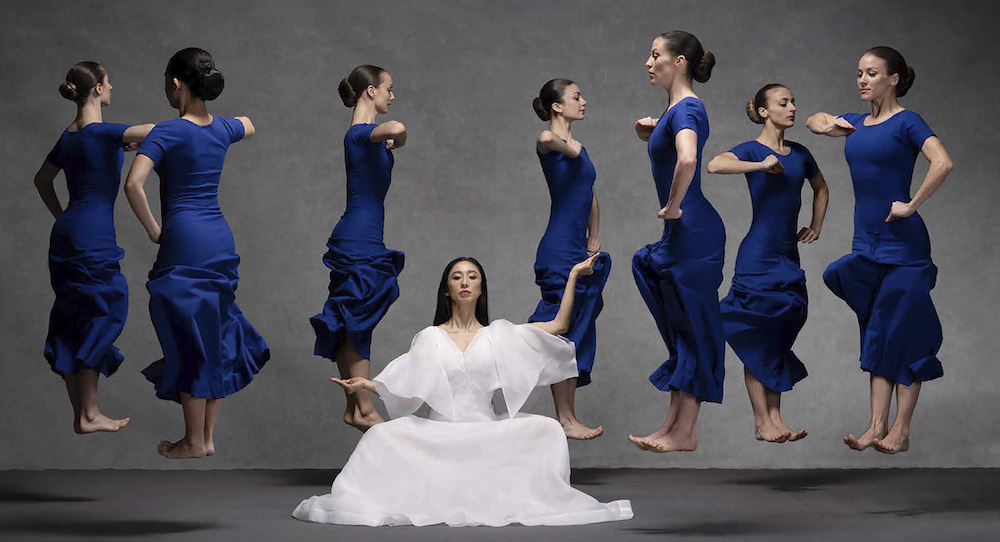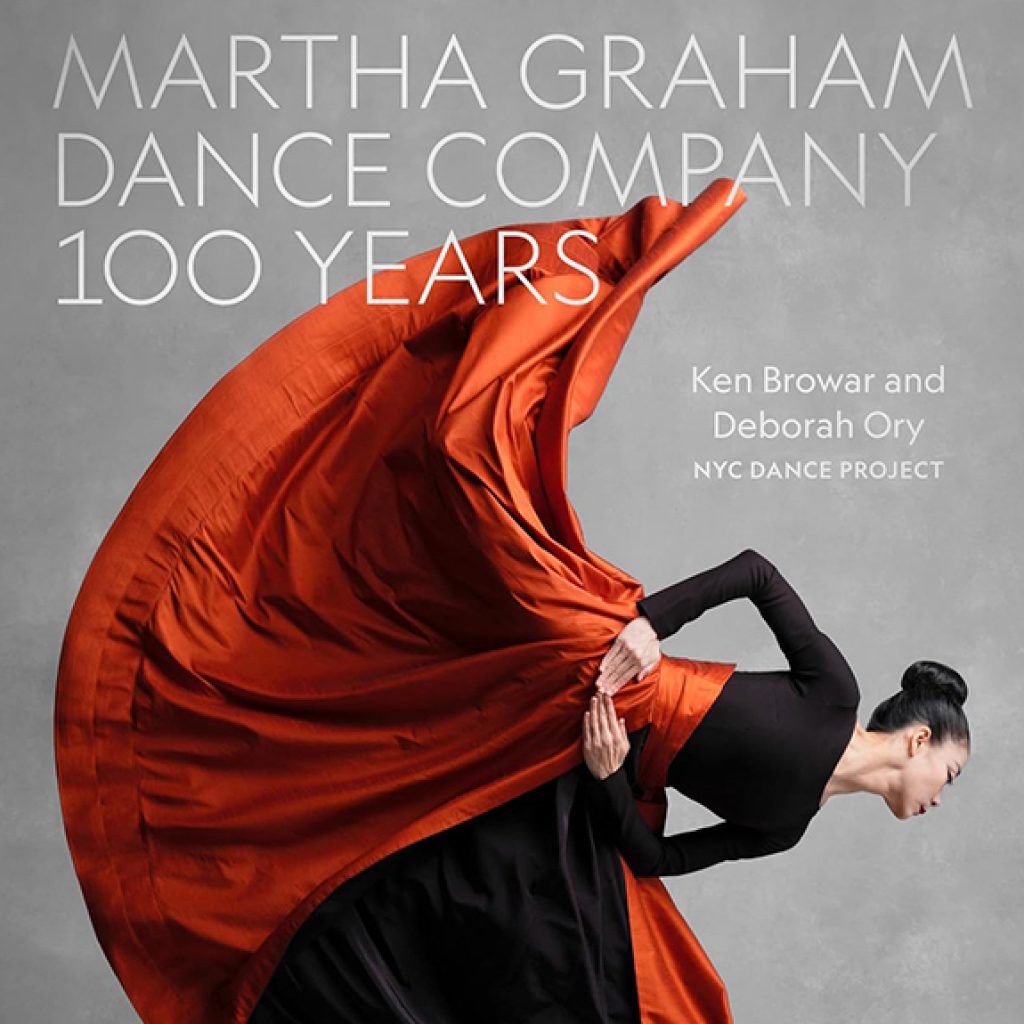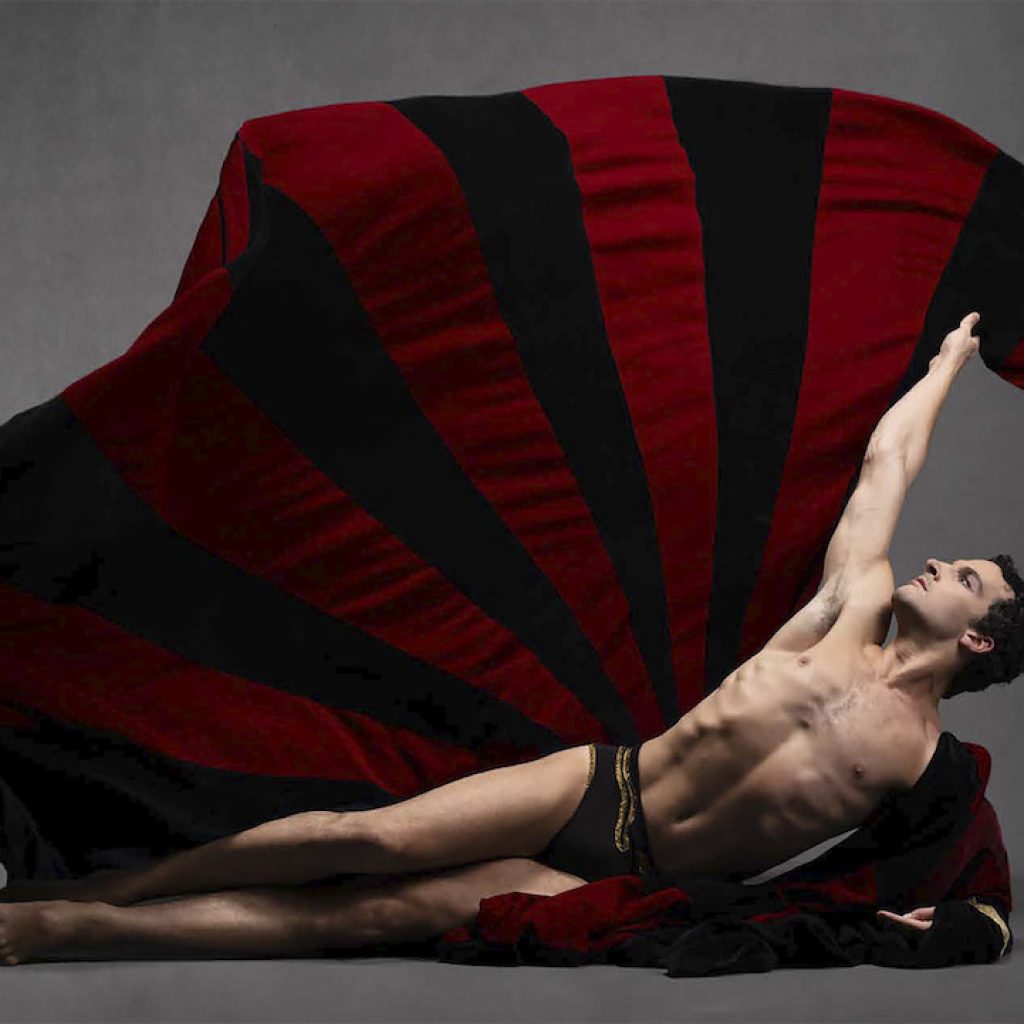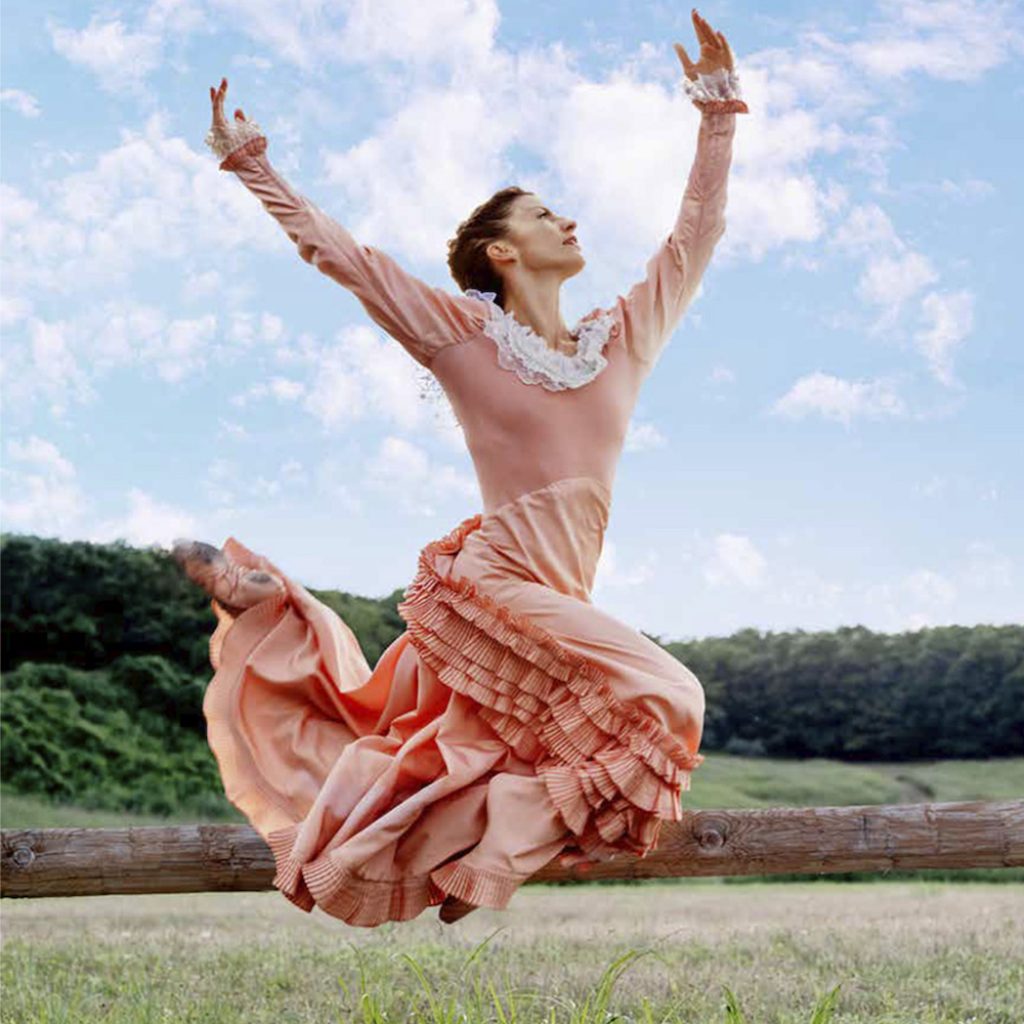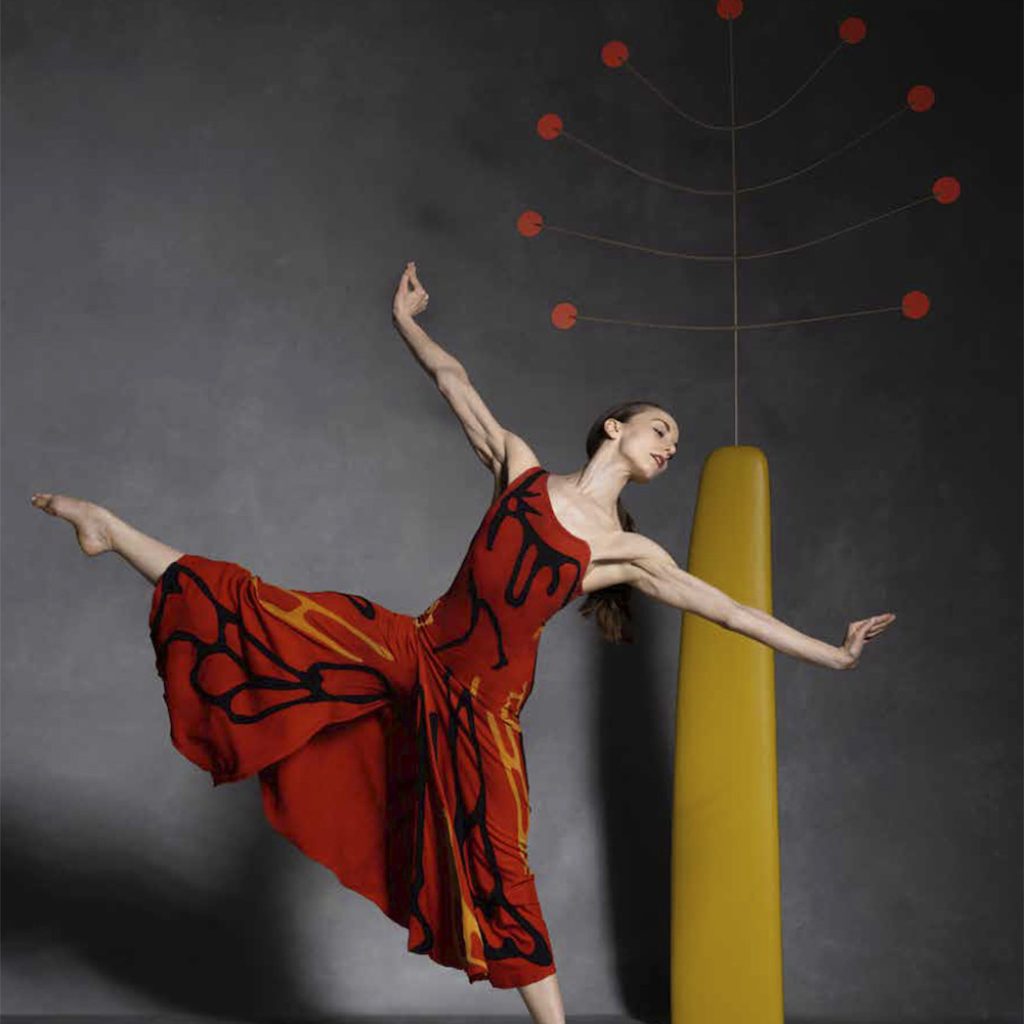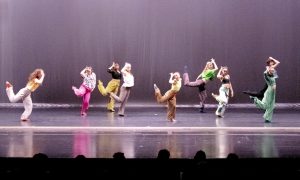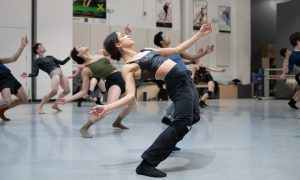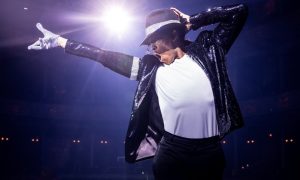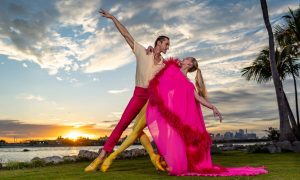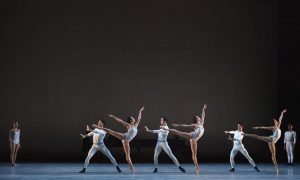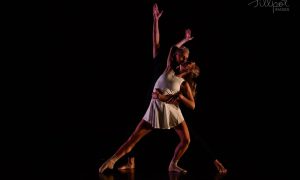In its particularly unique way, dance is best consumed as a live performance. No video, photo, written description or any other form quite captures the magic that comes from experiencing real bodies moving in space in front of an audience. There’s a reality to live performance, a sense of excitement stemming from the risk of it and a palpable raw energy that emanates from the stage to the audience.
Occasionally, however, two art forms can meld and create something that is greater than the sum of its parts. Acclaimed photographers Ken Browar and Deborah Ory recently released their third book of dance images, Martha Graham Dance Company 100 Years, which does just that. The book celebrates the company’s centennial birthday and includes new images of current company dancers, as well as archival images.
Dance Informa chatted with both Browar and Ory, as well as company dancers Marzia Memoli, Lloyd Knight, and Anne Souder about what it was like to bring this book, and the work of Martha Graham, to life in this way.
Ken and Deb, what was different about you process for this book verses your previous two?
Ken Browar and Deborah Ory
“Our first two books, we photographed in the studio, and we had a lot of control over every element of them. We had all the time in the world to work on them, and we had no restrictions on what type of movements we could do. But this one, we were trying to capture the choreography of Martha Graham, and we had specific costumes and a message with each dance. And sometimes we weren’t able to use the set. So we would try and recreate a moment outside. We were looking for something that might capture the same feeling in a slightly different interpretation. Ken and I scouted locations for days on end, looking for the perfect fence, or the perfect rock to be photographed on. We wanted the places to feel a bit vague of where they were. We wanted to really evoke a feeling of a place.”
You had great success with your first two books. How was it creating something to honor such a legacy, as opposed to having the full creative control of your previous work?
Browar and Ory
“We’re doing a Martha Graham book, and we are frightened of Martha Graham ourselves. The legacy is so important, and that’s something intimidating to have this incredible legacy that comes before us of these iconic dances. They have been photographed already by Barbara Morgan in such a beautiful way, and Philippe Halsman. By taking the dancers out of the studio and out of the theater, we really wanted to give them an environment they could actually imagine doing the piece or being a part of the piece, which was a big game changer. We’ve had dancers come to us and say, ‘When we perform that piece, we actually visualize where we shot together,’ which is incredible for us.”
Anne, you have danced for the MGDC for the last 10 years. Can you share what the legacy of the company means to you?
Anne Souder
“I think celebrating this milestone in American art and celebrating a female leader has come at a crucial time, and I’m happy that I get to physically express this as a current company member in performances, collaborations, touring and the opening of the brand new space for the Graham organization. I always feel humbled when I think of the 100-year lineage of women (and men) I follow, led by Martha herself. Graham’s works, no matter how many generations old, tell the story of the human experience. Even at 100, these ballets have never been more timely. It’s fun to show how the power of the Graham works have never and will never fade.”
As photographers, Ken and Deb, how do you connect to that human experience of the choreography and the company as non-company members?
Browar and Ory
“I think what makes a photographer special is the knowledge of the subject. We spent a lot of time educating ourselves. Without that deep knowledge or point of view of what photographers are shooting, it doesn’t take it to the next level. We went on tour with the company, and we spent a lot of time living with them, and them living with us. It felt like family, in a way. The more we got to know them and how they approached each work, it helped us take the picture.”
Marzia, can you share a bit about how your technique helped create the images in the book?
Marzia Memoli
“People often view Graham as a static and stationary technique. However, since my very first day in the company, I remember my rehearsal director emphasizing, ‘It’s not a pose; keep moving within it, deepen within it!’ For me, that’s what these pictures represent: movement rather than mere poses. It’s true that we often start with a pose, but we soon realize that the movement right before settling into that pose is what gives life to the images. It’s this fleeting motion that breathes vitality into the pictures. As Graham dancers, I think we master movement even in stillness. I wish I could share everything that goes through my mind when I hold a pose for over five minutes during a choreography. I’m not freezing; I’m fully alive within that pose! Many of the pictures you’ll see in the new book depict repertory pieces from Martha, ranging from her earliest works to the last ones. When we shoot, I focus on channeling my emotions, remembering that moment in the dance, and bringing genuine feelings into the shots, even as we repeat the same take over and over again.”
Lloyd, having shot with Deb and Ken in the past for other projects, what excites you about this particular book and collaboration?
Lloyd Knight
“This isn’t just another photography book – you have two great artists who have a rich history and knowledge of art, and appreciation for what The Graham Company is and who their dance artists are. The Graham works are full works of art displayed at their highest, from the choreography, to costumes, music and sets, so it feels right to have the company be the subject of this fantastic book. I’m sure the public will be in awe of it, and I can’t wait for people help us make this very special year one for the books.”
Finally, Ken and Deb, how do you see yourself as artists at this point in your careers – with the birth of your third book?
Browar and Ory
“I feel like we were allowed into a very special space of being able to create with a group of people and convey a particular message that’s been around for 100 years now. I guess, as any artist is, we’re all just simple storytellers. That’s really it at the end of the day.”
By Emily Sarkissian of Dance Informa.


